Ven pongal – a South Indian traditional dish prepared with rice and yellow moong dal! It is also known as ghee pongal or khara pongal. Here is my pressure cooker version of this traditional dish: ven pongal.
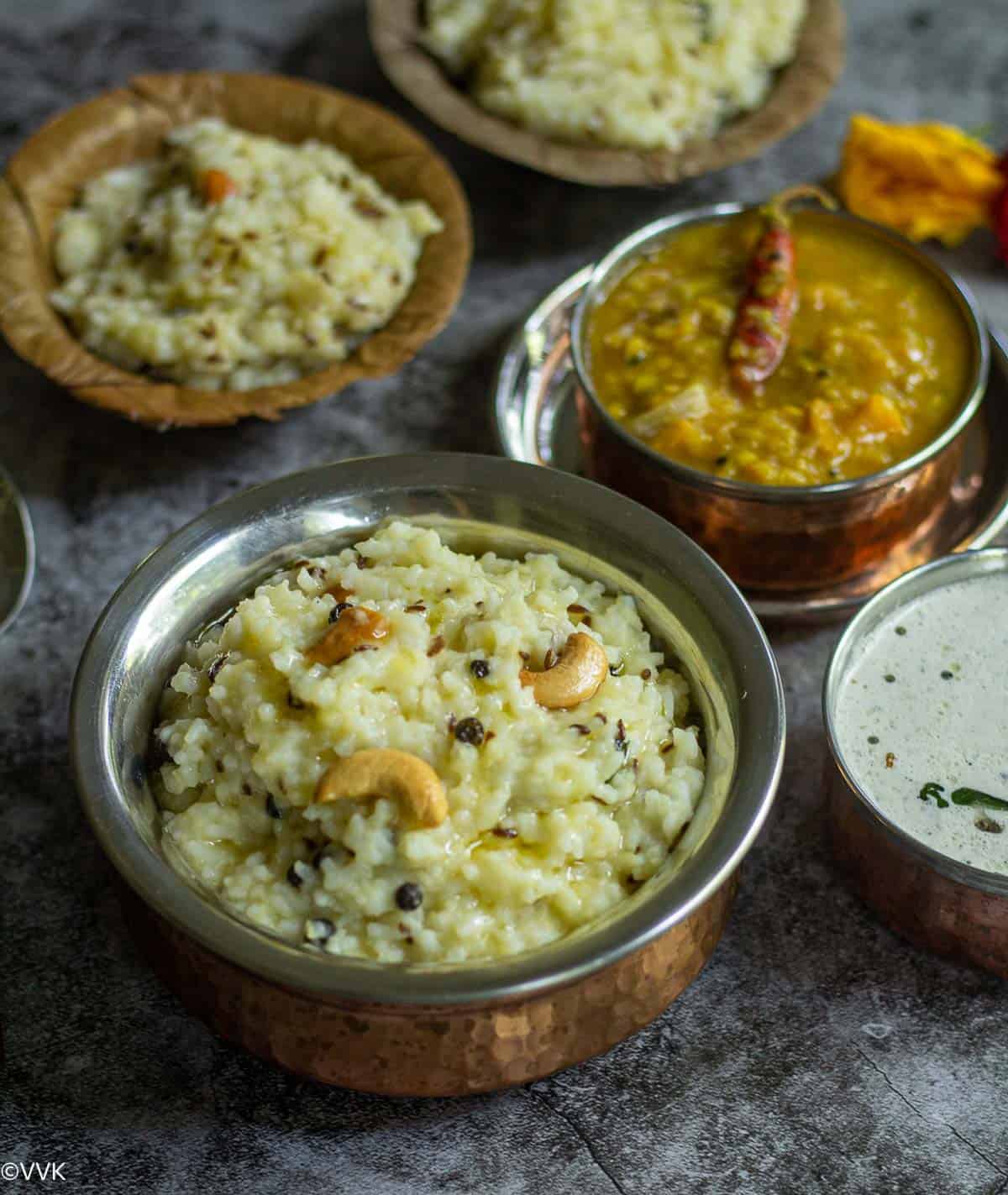
South India is known for its rice-based dishes, and this savory ven pongal is quite popular across South India. A vegetarian South Indian restaurant menu is incomplete without this ven pongal, and the many restaurants include vadai with ven pongal and make it a pongal-vada combo.
Jump to:
Pongal – festival and the dish
We refer to the harvest festival, the Makara Sankranthi, as pongal. I am not sure if the festival got its name from the dish or the dish from the festival. We make the sweet pongal, popularly known as sakkarai pongal/chakkarai pongal, for the festival along with this savory one.
We make the sweet pongal with rice, moong dal and sweeten it up with jaggery.
Ven pongal and other names
Ven in this context means white. It’s the short form of the Tamil word venmai, meaning white. As the pongal is white, we refer to it as ven pongal. You can also find people referring to this dish as ghee pongal and khara (meaning spicy) pongal.
Ven pongal as neivediyam
I usually make ven pongal on Thursdays to offer the same as prasadam or neivediyam for God. As we are talking about the neivediyam, ven pongal is one of the famous prasadam in Vishnu Temples / Perumal Kovil in Tamil Nadu. IMO, nothing can beat the taste of madapalli(temple kitchen) ven pongal. I love the hot pongal served in the donnai (leaf bowl) during the month of margazhi/December.
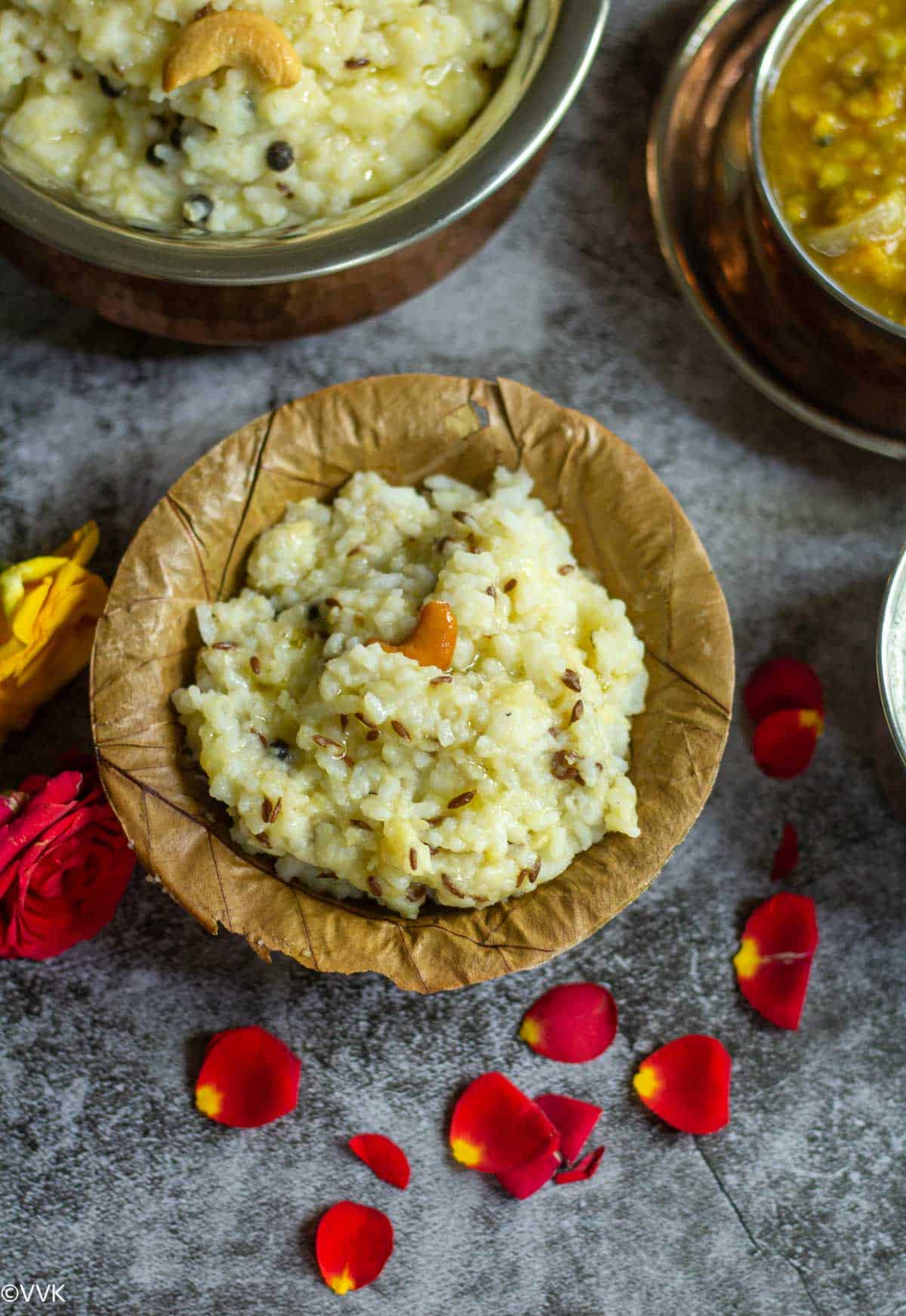
Side dishes for ven pongal
Ven pongal is a meal on its own. People compare it with North Indian khichdi, but it’s more than that with the unique flavors of black pepper, ghee, curry leaves, and cashews. In restaurants, ven pongal is typically served with sambar and chutney. And that’s how I am presenting today too.
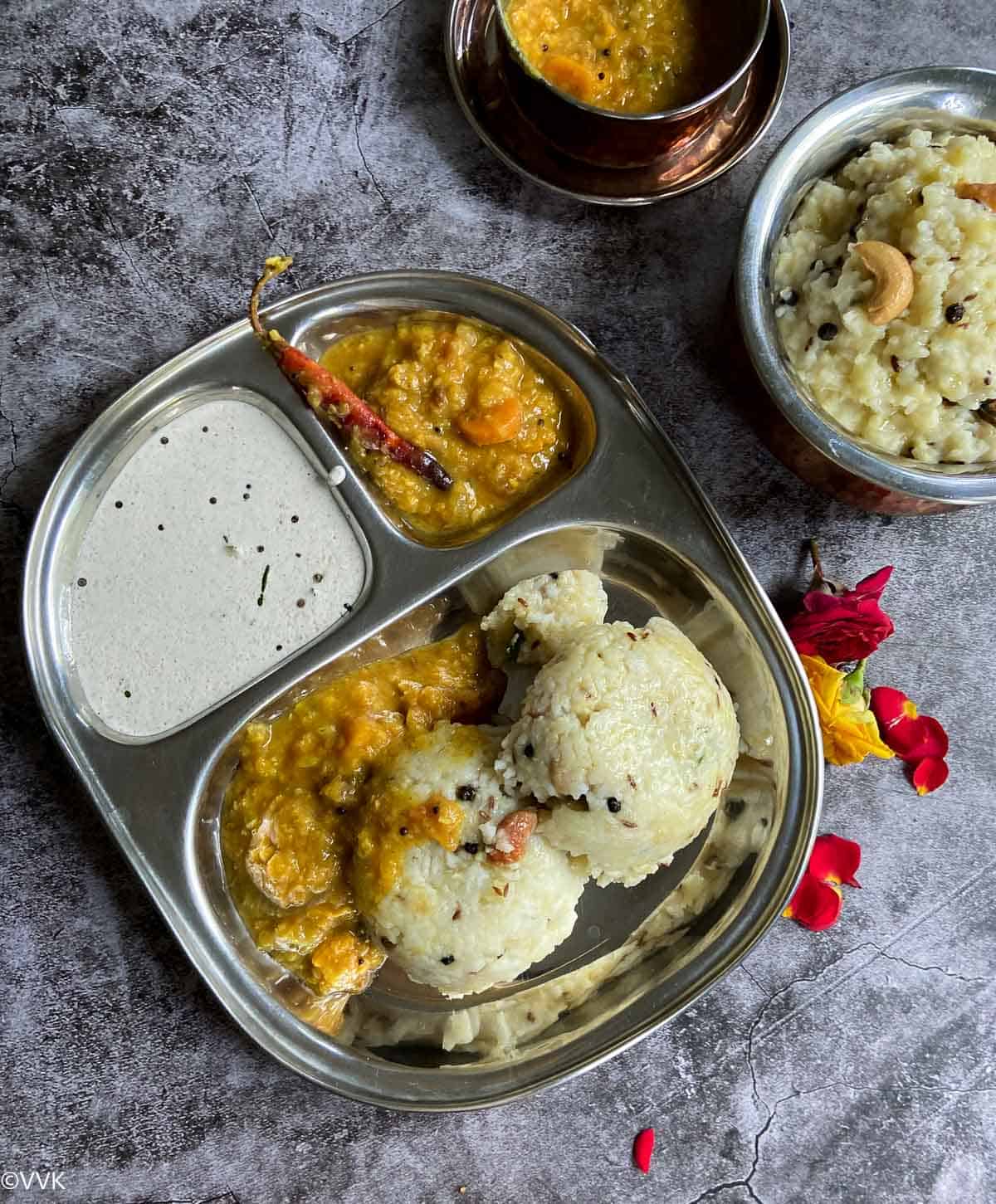
But you can also serve ven pongal with gojju and brinjal gothsu. Ven pongal and brinjal gothsu is a popular combination which is my favorite too. You can also serve it with assorted chutneys.
Ingredients required
Raw rice: We typically make pongal with raw rice. You can also use other grains of your choice, like millet, quinoa, buckwheat, etc. When it comes to rice, I opt for the short-grain raw rice variety than basmati. I feel basmati alters the flavor of the dish.
Yellow moong dal: We use the split yellow moong dal for this pongal, and I don’t follow any ratio per se.
Water: We need little extra water for ven pongal as typically pongal is soft and mushy. There is no harm in making grainy pongal, but we love soft and mushy pongal.
Whole black pepper: An essential ingredient that adds spiciness to this dish. We don’t add any other spices like chili or spice powder, just the black peppercorns.
Curry leaves: I love to add curry leaves in pongal, and the flavor is fantastic. If you can’t source curry leaves, please ignore them. There is no substitute for curry leaves.
Cumin seeds: Yet another essential ingredient! I always add a little extra cumin seeds and peppercorns to my pongal. You can reduce the measure if you don’t like the bite of it.
Ginger: In my opinion, black peppercorns, ginger, and cumin bring that taste to pongal. Chop the ginger finely and, as always, adjust the measure to taste but do not skip the ginger.
Cashews: Purists might not accept ven pongal without cashews, but I have made many times without cashews. Yes, it makes the dish rich, but if you don’t have it in hand, fret not; you will still have a delicious pongal.
Ghee: We do the entire tempering in ghee, and you can also add some extra ghee. Use good quality ghee. I always use my homemade ghee as I am not a big fan of store-bought ghee.
Asafoetida: I add a pinch of asafoetida, but that’s optional.
Optional ingredient: My MIL always adds a pinch of ground turmeric to the pongal. I add it sometimes but skip it most of the time.
Dietary specifications
As you can see from the ingredient list, this ven pongal is a vegetarian dish. If you are looking for nut-free, gluten-free, and vegan ven pongal, then check out my quinoa and foxtail millet pongal. Also, it’s an Instant Pot version of ven pongal.
Now, without further ado, let’s see how to make ven pongal in the stove-top pressure cooker. I am making the ven pongal using the pot-in-pot method and not directly in the pressure cooker.
Watch me make ven pongal
How to make ven pongal in the pressure cooker
- Take the rice and the moong dal in the vessel in which you will make the pongal. Rinse the rice and dal thoroughly, and drain the water.
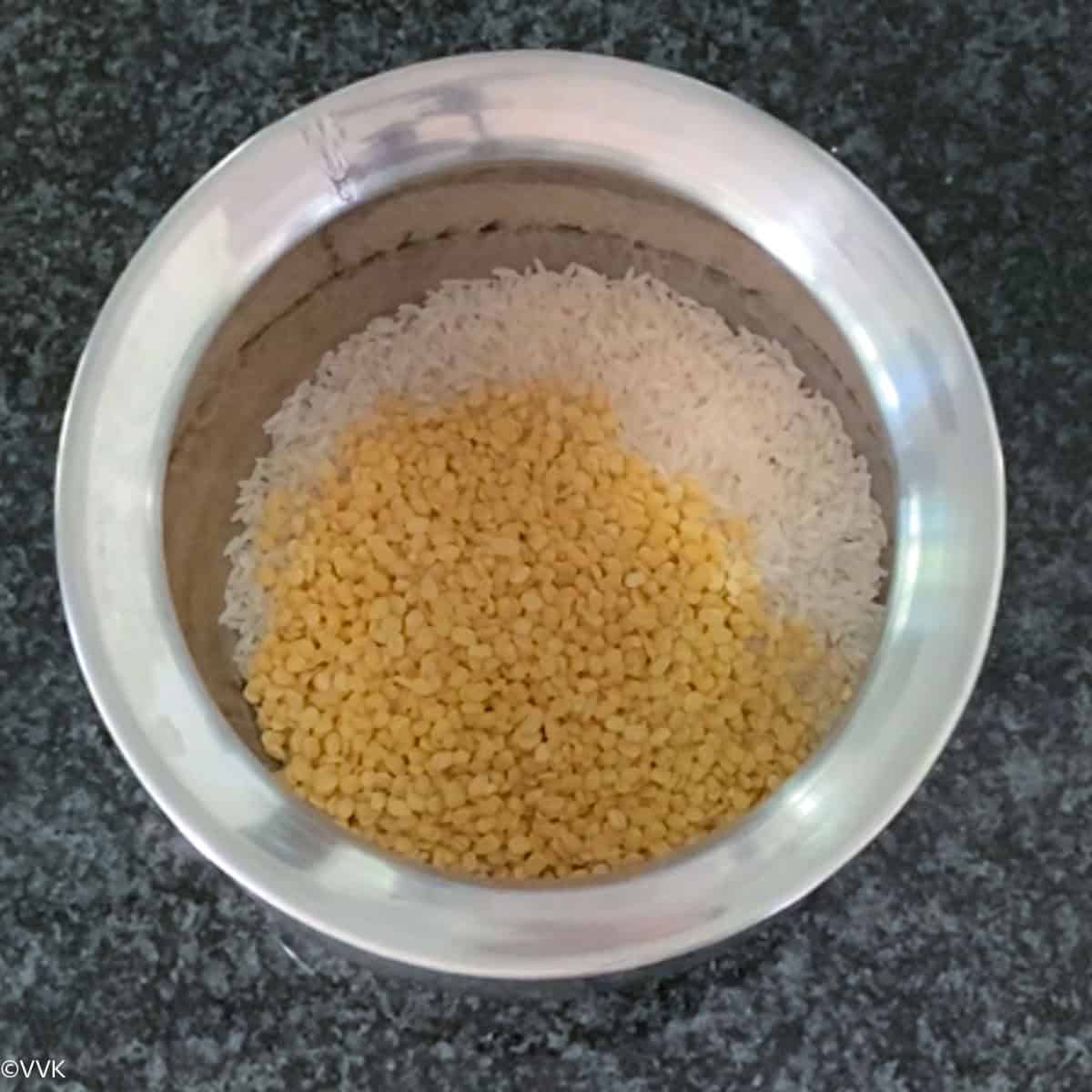
- Add 3 cups of water, a few curry leaves, ½ tsp black peppercorns, and salt. Mix well.
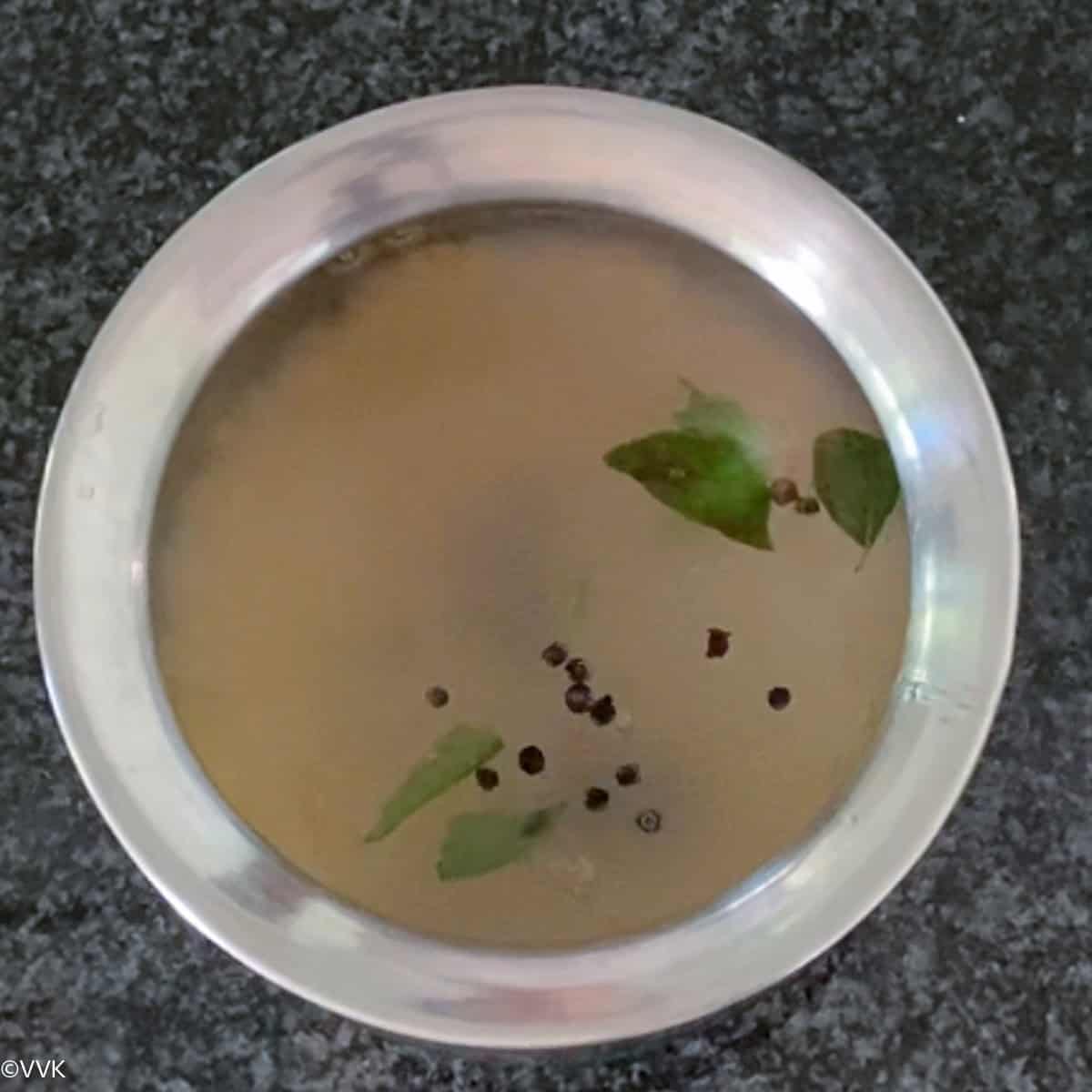
- In a pressure cooker or pan, add 1.5 cups of water and place the vessel with the rice and dal. Close the pressure cooker and put the whistle/weight. Pressure cook for four whistles and let the pressure subside naturally.
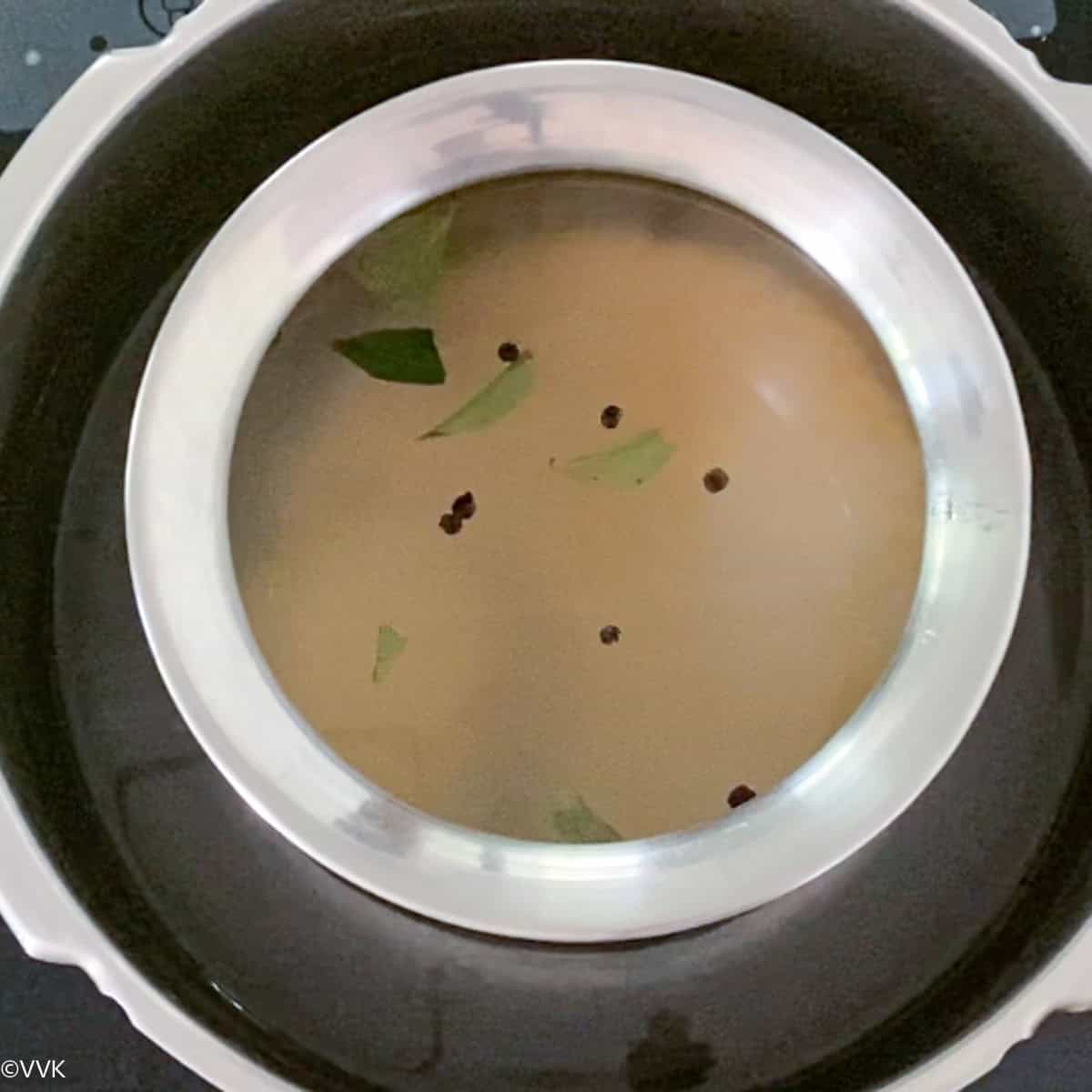
- Open the pressure cooker and take out the inner pot with pongal carefully. Mix and mash the rice and dal. Now add ½ to 1 cup of hot water, mix well, and bring the pongal to your desired consistency.
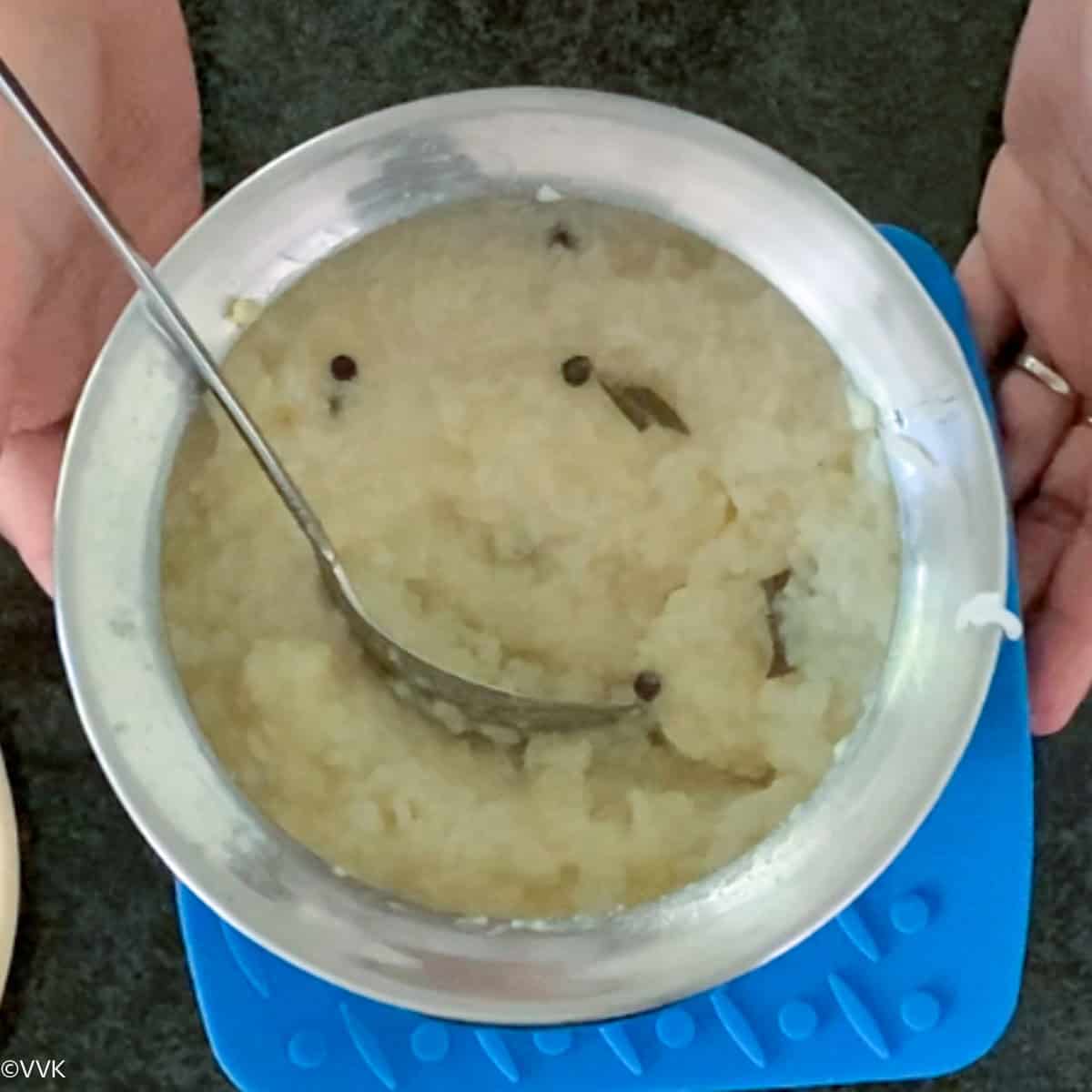
- In a separate tempering pan, add the ghee, and when it is hot, add the remaining black peppercorns, cumin seeds, curry leaves, ginger, asafoetida, and cashews. Roast until the cashews are light golden brown.
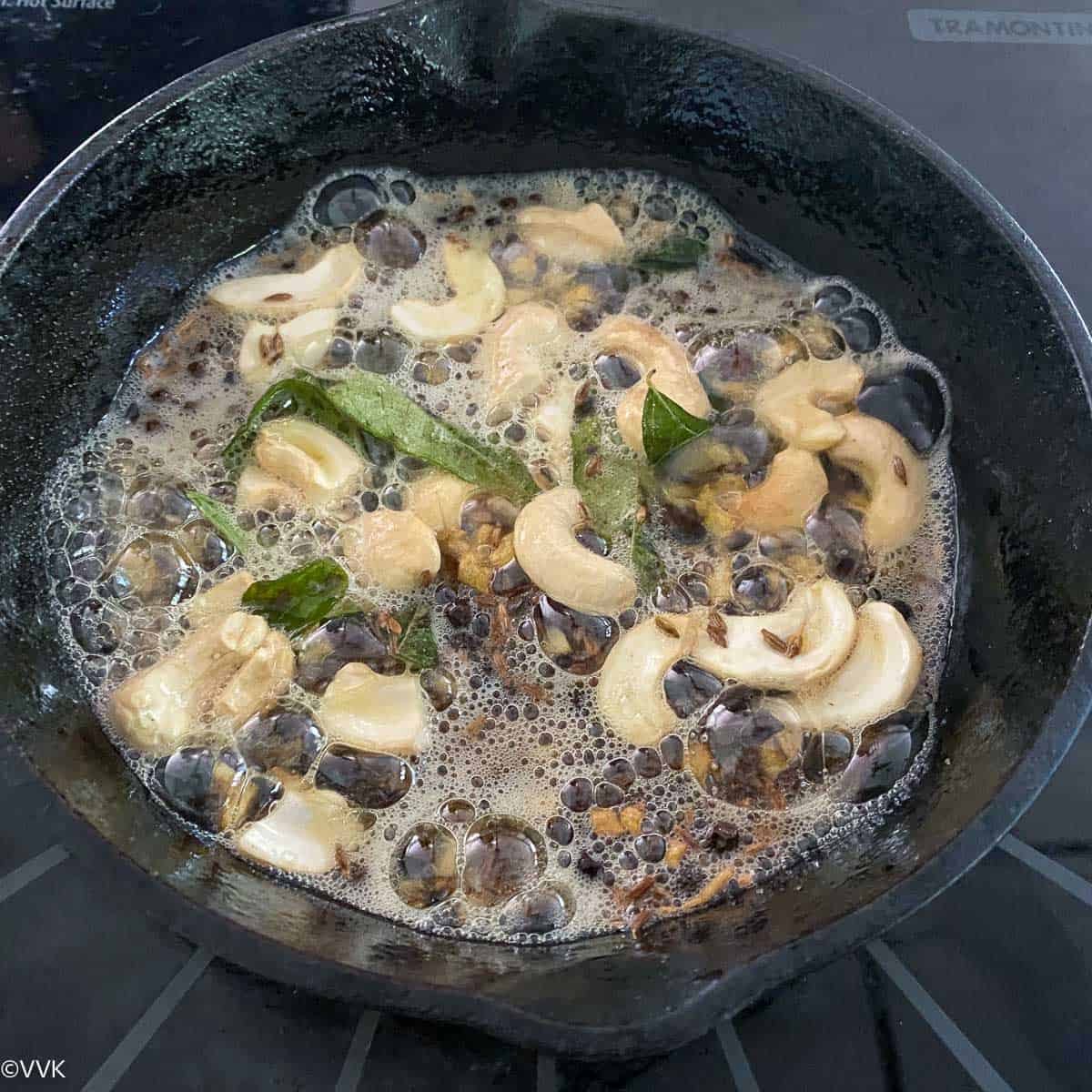
- Add this tempering to the ven pongal and mix well. Serve hot with sides of your choice.
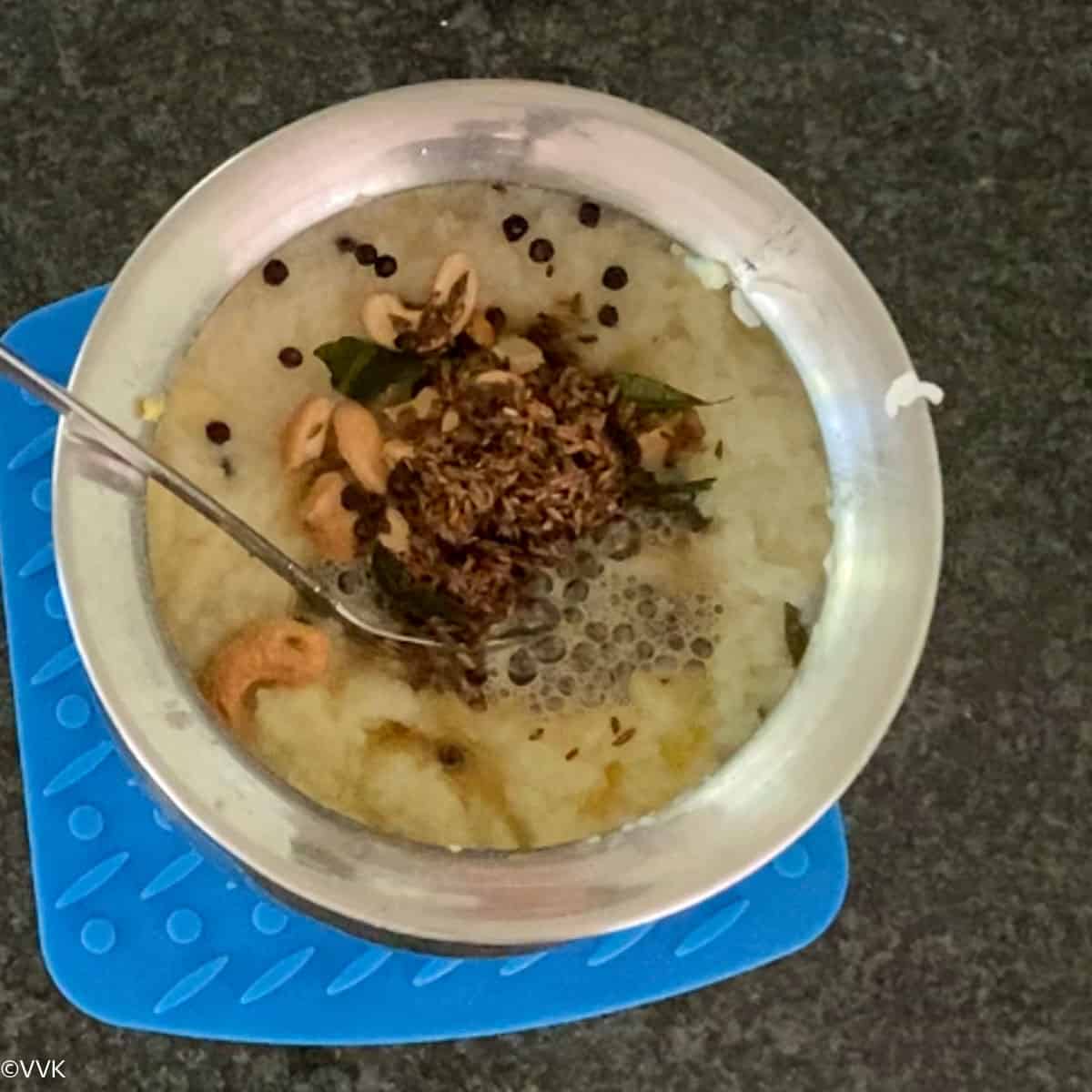
Recipe notes
- If you are not a big black pepper fan, instead of adding black peppercorns, add 1 tsp of black pepper and ½ tsp of ground black pepper, or adjust the pepper powder according to your taste.
- If you feel the salt is less, add the required salt to a ¼ cup of hot water. Allow it to dissolve, and then add it to the pongal. Do not add the salt directly to the pongal.
- I don’t add the full measure of water while pressure cooking. I reserve one cup and always add it after the pressure cooking part is complete. Add hot water while adjusting the consistency of pongal.
- Adjust the water according to the rice variety/quality and as per your liking.
- While tempering, I don’t add the ingredients one by one. I add them all at once, as we love the deep-roasted flavor of cumin and ginger. You can add them one by one too.
- Adjust the ghee measure to your preference. You can reduce it to 2 tbsp or increase it to 4 tbsp too.
- You can replace rice with quinoa or millets. (Check quinoa foxtail millet pongal recipe)
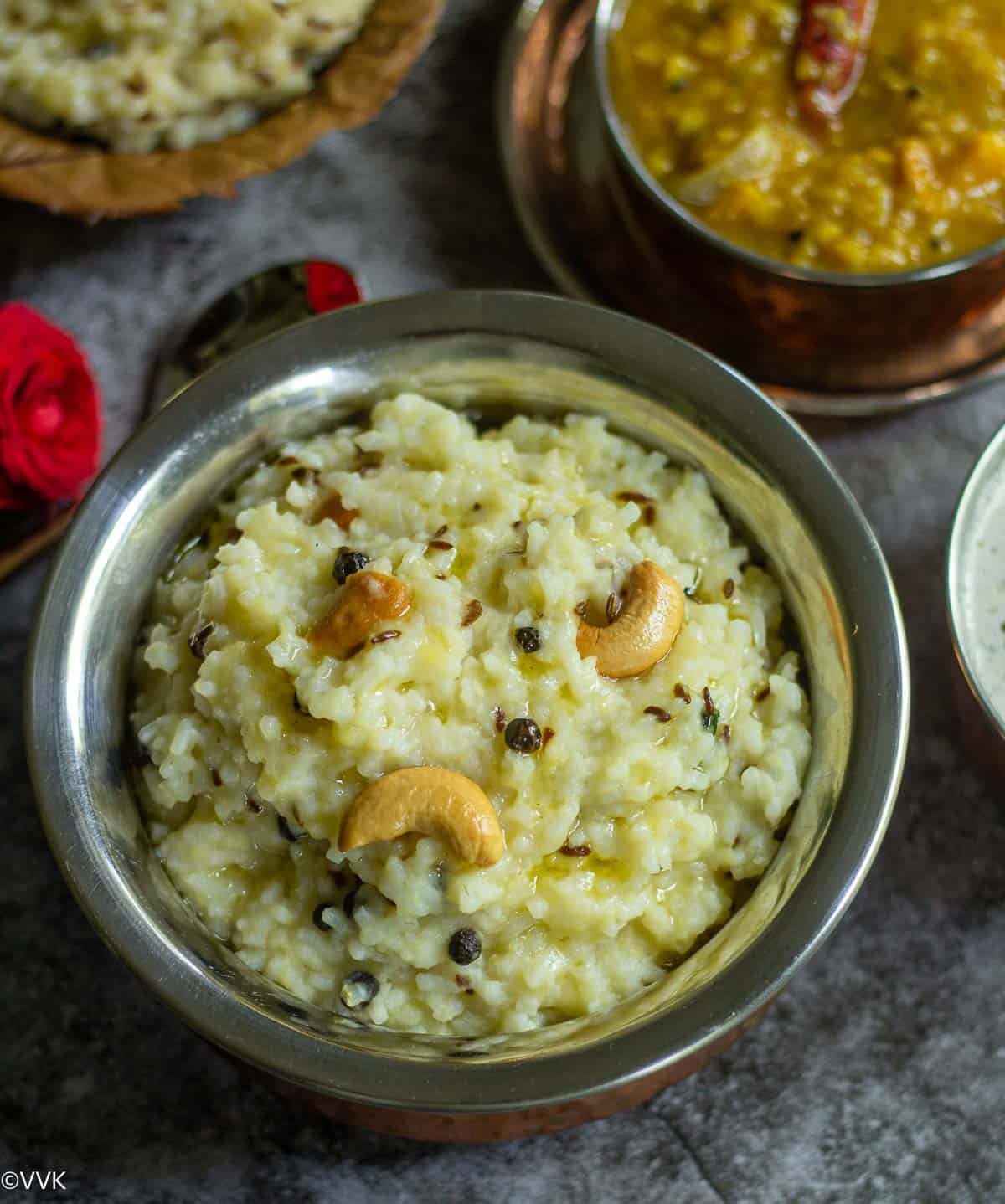
Explore other South Indian breakfast recipes
Loved this recipe?
If you try this ven pongal, please don’t forget to comment and rate this recipe. If you have any questions, please leave a comment, and I will get to it ASAP. Make sure to follow me on my Pinterest or Instagram or join my Facebook Group for recipe updates and simple Indian meal ideas.
📖 Recipe
Ven Pongal | Khara Pongal | Pressure Cooker Ven Pongal
Equipment
- Instant Pot or Pressure Cooker
Ingredients
Measurement Details: 1 cup = 240ml; 1 tbsp = 15ml; 1 tsp = 5ml;
- ¾ cup raw rice
- ¼ cup yellow moong dal
- 4 cups water divided ( 3 cups + 1 cup hot water), plus extra water for the pressure cooker
- 2 tsp black peppercorns divided (1.5 + ½ tsp)
- 10 curry leaves divided
- ¾ tsp salt or to taste
- 3 tbsp ghee
- 1 tbsp cumin seeds
- 1.5 tsp ginger chopped
- 1/16 tsp asafoetida a tiny pinch
- 15 cashews broken
Instructions
- Take the rice and the moong dal in the vessel in which you will make the pongal. Rinse the rice and dal thoroughly, and drain the water.
- Add 3 cups of water, a few curry leaves, ½ tsp black peppercorns, and salt. Mix well.
- In a pressure cooker or pan, add 1.5 cups of water and place the vessel with the rice and dal. Close the pressure cooker and put the whistle/weight. Pressure cook for four whistles and let the pressure subside naturally.
- Open the pressure cooker and take out the inner pot with pongal carefully. Mix and mash the rice and dal. Now add ½ to 1 cup of hot water, mix well, and bring the pongal to your desired consistency.
- In a separate tempering pan, add the ghee, and when it is hot, add the remaining black peppercorns, cumin seeds, curry leaves, ginger, asafoetida, and cashews. Roast until the cashews are light golden brown.
- Add this tempering to the ven pongal and mix well. Serve hot with sides of your choice.
Video
Notes
- If you are not a big black pepper fan, instead of adding black peppercorns, add 1 tsp of black pepper and ½ tsp of ground black pepper, or adjust the pepper powder according to your taste.
- If you feel the salt is less, add the required salt to a ¼ cup of hot water. Allow it to dissolve, and then add it to the pongal. Do not add the salt directly to the pongal.
- I don’t add the full measure of water while pressure cooking. I reserve one cup and always add it after the pressure cooking part is complete. Add hot water while adjusting the consistency of pongal.
- Adjust the water according to the rice variety/quality and as per your liking.
- While tempering, I don’t add the ingredients one by one. I add them all at once, as we love the deep-roasted flavor of cumin and ginger. You can add them one by one too.
- Adjust the ghee measure to your preference. You can reduce it to 2 tbsp or increase it to 4 tbsp too.
- You can replace rice with quinoa or millets. (Check quinoa foxtail millet pongal recipe)
Nutrition
I am not a nutritionist. The nutritional information is provided as a courtesy and is an estimate only. It varies depending upon the product types or brands.
Update Notes – Earlier posted in 2012. Now updated with new pictures, detailed ingredient description, recipe card with nutritional information.


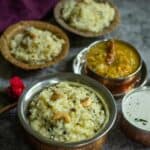
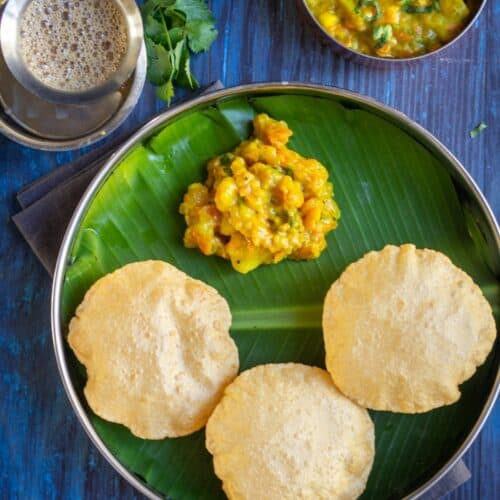
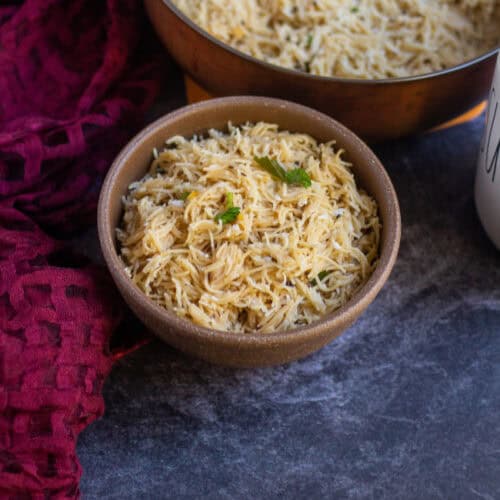
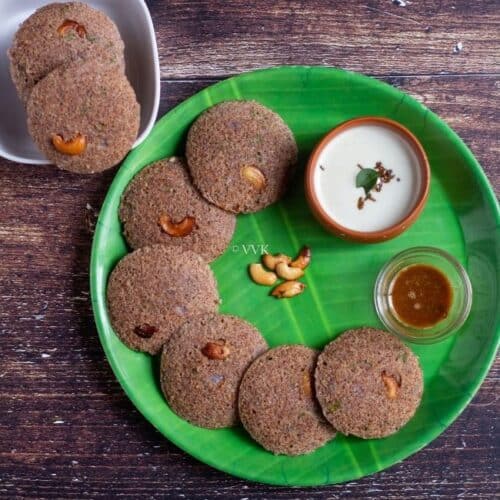
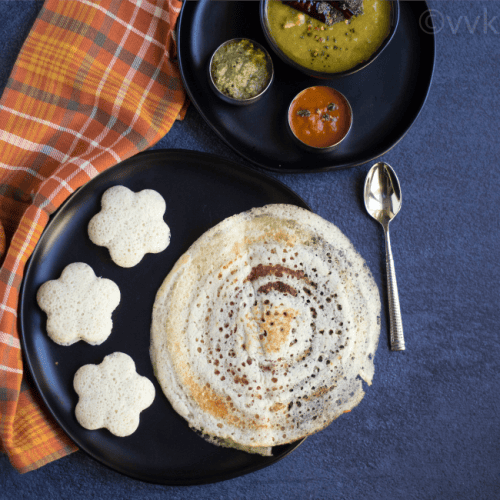
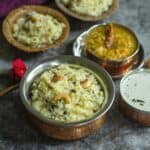
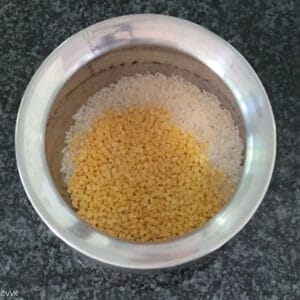
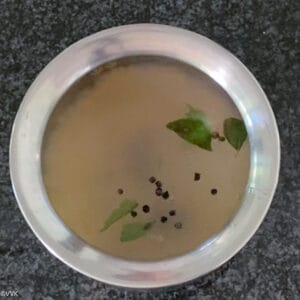
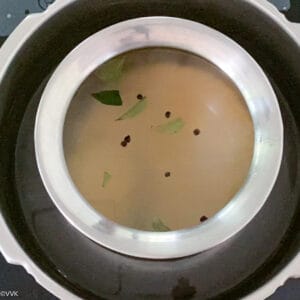
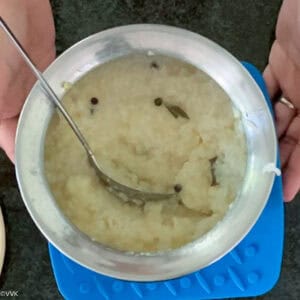
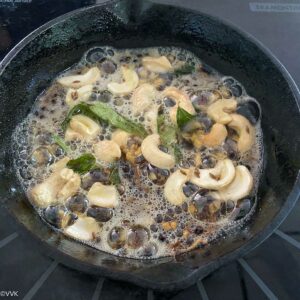
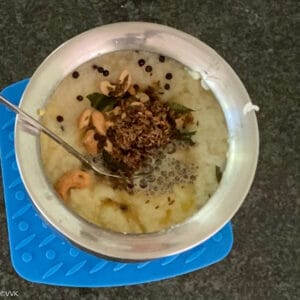

Is there an instant pot version of rice venn pongal?
I have quinoa and millet pongal – https://www.vidhyashomecooking.com/quinoa-foxtail-millet-pongal-dft/. For rice, you can try it in a similar way.
Comfort food:-)
Yup :-)